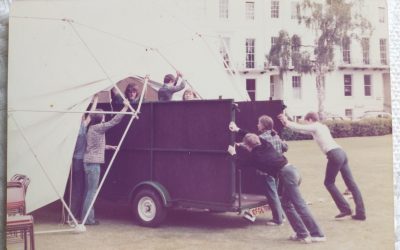 This week I’m giving a recital of music by historical women pianist-composers. I’ll be playing an Erard grand piano made at the end of the 19th century by the firm of Sebastien Erard in Paris. (Officially the piano is dated around 1900, but a technician told me he thinks it could be earlier.)
This week I’m giving a recital of music by historical women pianist-composers. I’ll be playing an Erard grand piano made at the end of the 19th century by the firm of Sebastien Erard in Paris. (Officially the piano is dated around 1900, but a technician told me he thinks it could be earlier.)
This Erard, recently donated to Edinburgh University and now housed in their collection of musical instruments at St Cecilia’s Hall (where the concert is), is not only interesting to play but beautiful to look at (see photo). Enormous trouble has been taken over the piano’s casework, decorated by Paul Sormani (1817-77), a maker of fine furniture. He has inlaid (if that is the right word) marquetry work all round the case, not forgetting the music desk and the two flat ‘shelves’ either side of the music desk, where one would pile up music waiting to be used. The detail is lovely to behold.
I went down to the museum of instruments the other day to have a go on the piano. It’s currently in its usual place in the museum, so I just sat among all the historical keyboards and played for an hour or so.
Whenever I have the chance to play an antique piano, I go through several stages of getting used to it. The actual sound, characteristic of a 19th century piano, is thin and hard compared with the modern grand piano, which is mellower and fuller. An older piano can sound disconcertingly like a pub piano which hasn’t been maintained. The mechanism rattles a bit more than I’m used to. The pedals aren’t as effective as modern ones. The keyboard is less even, both in touch and in the layout of the keys, some of which have minute gaps between them. A casual observer might not even notice the gaps, but if you are used to playing a perfectly even keyboard, these tiny gaps between keys can feel a little odd.
You have to ‘tune in’ to the sound of the historical piano. At first it seems almost jangly. Then your ear starts to get used to it. The sound is less cushioned, less singing than on the modern grand piano. But when you tune in, you start to appreciate a clarity and – is it too far-fetched to say a sort of honesty? The tone is not big, but it’s direct and clear.
It’s as well to remember that Beethoven wowed his listeners when he played pianos a hundred years older than this – their tone presumably even ‘thinner’ and ‘harder’ according to our modern taste. Chopin enraptured his audiences on pianos fifty years older than the Erard. And of course Liszt was said to make his listeners swoon when he performed on mid-19th century pianos. Clearly the tone of the piano is only a factor in the effect the player can produce. Musicianship can be appreciated on many kinds of instruments. Today we relish the full, glossy, ringing tone of the concert grand piano, but in previous eras they must have been sensitive to other qualities.




0 Comments